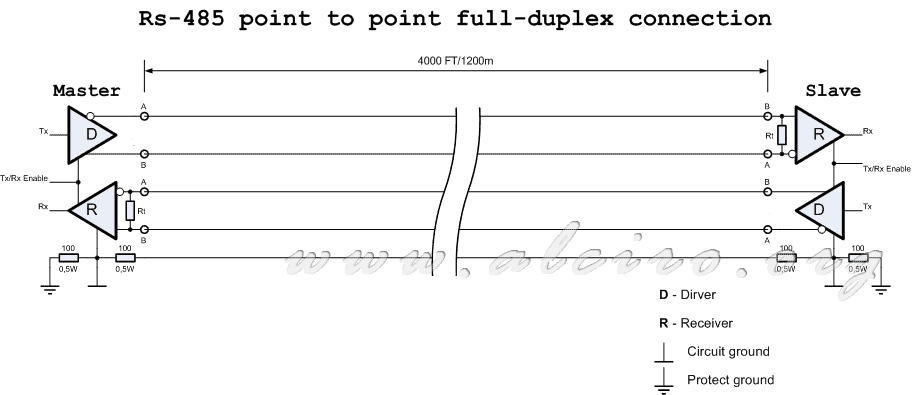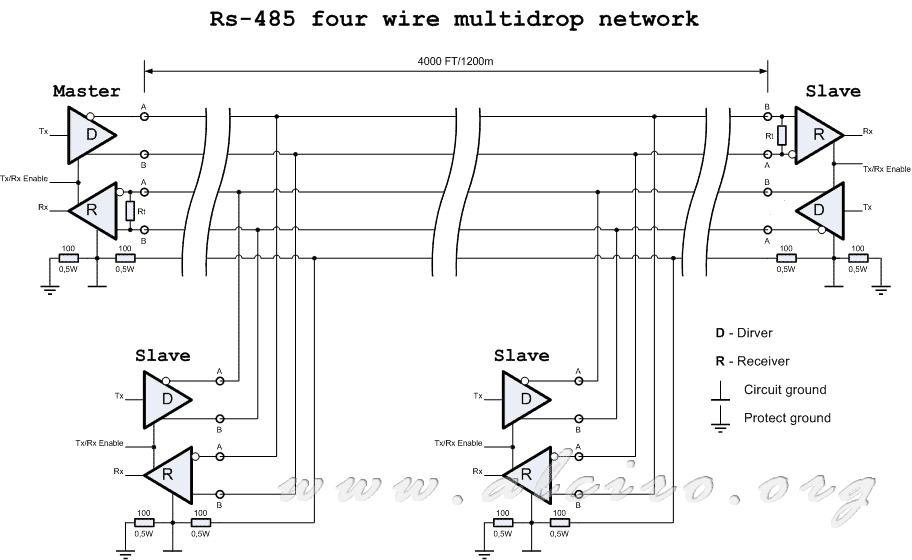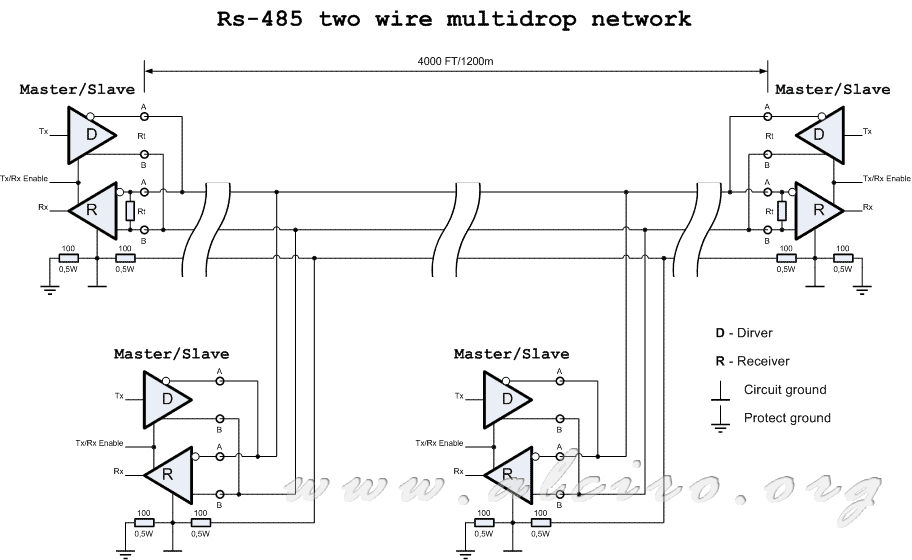3. Topology of RS-485 connections
The RS-485 standard states that each of its nodes connected to the transmission line forming a chain known as Bus topology. Each element or node of the network (driver, receiver) is connected to the transmission line by means of cables short link.
Physical characteristics, this type of topology is the simplest that can be implemented. But in contrast to their low requirements on the hardware, software development is complicated by having to develop procedures for collision detection and arbitration rules.
The interface with the bus type topology can be designed for simultaneous dual-communication (full duplex) or non-simultaneous dual-(half-duplex).
3.1. Point to point full-duplex
Simultaneous dual-communication (full duplex) requires the use of 2 pairs of wires (four wires) for communication. It has to separate the transmission and reception with separate wires connecting the transmitter to the receiver element of the other and vice versa.
Example of a point to point dual-simultaneous (full-duplex):

Point to point full-duplex
3.2. Network of four multi-point wireless
Can be mounted four-wire networks with simultaneous dual-communication (full duplex) with a connection similar to point connection. Although communication between two nodes can be (full-duplex) only one network node has the ability to communicate with everyone else, this node is called a master (Master), the other nodes are called slaves (Slave .) Slave modes can not establish communication between them, they always have to communicate with the master.
Example of a network of four simultaneous dual-wire (full duplex):

Red four-wire multi-element
3.3. Red two-wire multi-point
You can set up a wireless network with two thus greatly simplifying the connections in the communication bus. The rs2485 2-wire networks can only communicate non-simultaneous dual-(half-duplex), which leads to a form of communication question-answering.
The advantage of these networks is that you can mount a multi-master structure (multi-master), ie each node has the ability to communicate with each other. Obviously everything has a price, the rules of arbitration and collision detection is essential in this type of network.
Example of a wireless network of two dual-No simultaneous (half-duplex):

Two-wire network multi-element







